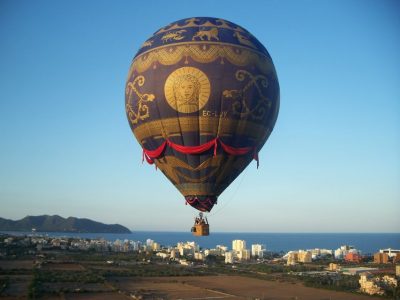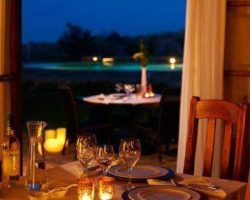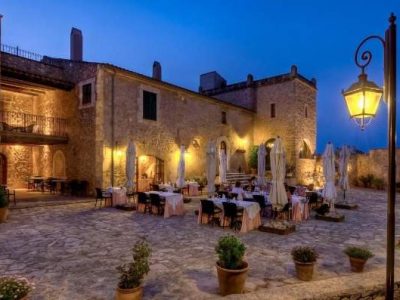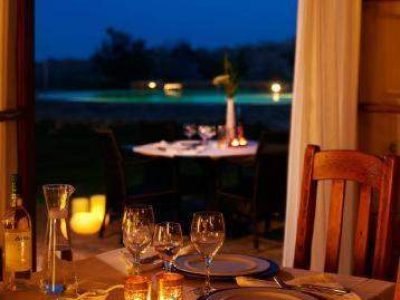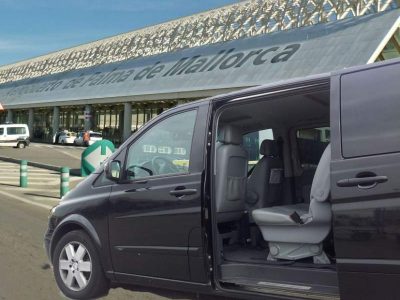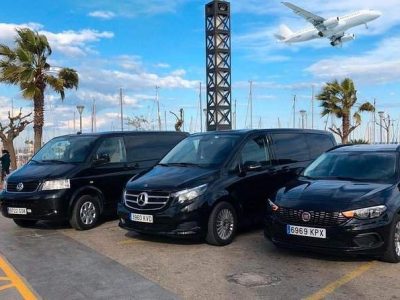All your holiday planning needs in one place, letting you book direct and benefit from official online rates
- Places To Go
- Things To Do
What’s Your Interest?
Traveling with kids
- Blog
Manacor, Mallorca - A Guide to Sights and area
Manacor is Mallorca’s second largest city and municipality. As in any other major city, you will find a wealth of activities, cultural happenings and lively bar and restaurant life.
- This is where I want to go!

What to expect in Manacor
Manacor is a place with several faces; on one hand you have the developed coastal towns of Cales de Mallorca, Porto Cristo, Cala Millor, Sa Coma and s’Illot. In Manacor town you can expect to meet a lot of shops, eateries, galleries and beautiful architecture.
Best things to do in Manacor
Manacor is the second largest city and municipality of Mallorca, yet widely unknown by most tourists. Manacor is a great place to do sports, there are all kinds of landscapes perfect for numerous activities like cycling, walking, sailing.
ESGLESIA NOSTRA SENYORA DELS DOLORS
The parish church of Our Lady of Sorrows is undoubtedly the most eye-catching construction in Manacor with its unique bell tower rising high above the rooftops of the town from its central location.
CUEVAS DEL DRACH
Cuevas del Drach (Dragon Caves) is an impressive tourist attraction for both young and adults. Descent via the stairway into the underground caves where millions of years of nature’s own creations awaits you. At the bottom of the caves you will find Europe’s largest underground lake where an orchestra will perform a concert for you before you are taken for a small cruise on the lake.Visit the famous Cuevas del Drach caves
WINE TASTING AT BODEGA SON SUREDA RIC
Visit the charming winery Bodega Son Sureda Ric for an authentic and interesting wine experience. At the finca, you will get an indulging tour through the history of this winery, as well as learn about the process and production of the fruity wines.
RENT A BIKE AND GO CYCLING
Manacor is a fairly large municipality, with great variety in the landscape. Here you will find beautiful coastlines, hilly terrain, mountains and quiet country roads, in short, something for everyone. Moreover, Mallorca’s only Ruta Verde starts from Manacor and ends in beautiful Artà, a magnificent trip.
CHURCH AND CLOISTER OF SANT VICENC FERRER
Vicenc Ferrer had a major impact on the Spanish congregation, including the Mallorcan. The beautiful cloister of the old convent, which is now transformed to public library, has been categorized as a national monument and definitely worth seeing.Visit the Sant Vicenc Ferrer convent and church
TORRE DELS ENAGISTES / HISTORY MUSEUM OF MANACOR
Visit the old medieval fortress and historical museum of Manacor, Torre dels Enagistes for an interesting journey through the municipal history. Fascinating exhibitions tell the stories of how life has been in the area all the way back from the prehistory of the island.
MAJORICA PEARLS
Majorica is a world-famous luxury brand that makes artificial pearls. The Manacor based company has received great international recognition for its high quality and lush design of pearl jewelry. Come visit Majorica and discover the world of pearls.
TALAYOTIC SETTLEMENT OF S’HOSPITALET VELL
Visit the amazing excavation site of s’Hospitalet Vell, a prehistoric village of megalithic constructions. Info boards on the site will guide you through the village and explain about the life of these people who occupied the area in the Bronze Age.
BASILICA DE SON PERETO
The excavation site of Son Pereto shows a paleo-Christian basilica that was built by the first Christian community that arrived in Mallorca after the Byzantine re-conquest. You can clearly see the outline of the construction, the baptistery and the graves. On site, info-boards will guide you through the site and explain about this interesting find.
HEAD OUT TO THE SHORES
Just because you’re not quite at the coast, doesn’t mean you can’t enjoy the beaches of Mallorca. Just 10 kilometers from Manacor town, you will find a string of small and medium-sized golden beaches and bays, perfect for both relaxation, swimming, sailing etc.
FAQ
All year-round. During the summertime, the developed coastal areas of Porto Cristo, Cales de Mallorca, Cala Millor, Sa Come and s’Illot are popular destinations. During the winter, Manacor is a mecca of sports enthusiasts.
Manacor town is the second largest on the island, and therefore never closed.
You have a wide array of beaches to choose from, all about 10-15 kilometers (8 miles) from Manacor town.
Manacor is known for its furniture manufacturing that has been a predominant industry in the area for centuries. Moreover, Manacor is known for its production of artificial pearls, made by Majorica.
Yes, Manacor is safe to visit. As with any place, you should always keep your personal belongings close to you. But theft is rarely seen here.
Events in Manacor


Weekly market in Manacor
The weekly market in Manacor is held every Monday morning in the heart of the city, at Plaça Ramon Llull.
There is also a daily fruit and vegetable market held in Plaça Constitució from Monday to Saturday.
Annual events and happenings
January
Sant Antoni Abat
Sant Antoni Abat is one of the most beloved festivities among the inhabitants of Manacor. Sant Antoni Abat is a great chance for you to experience some typical Mallorcan tradition and culture firsthand, as you will see dancing demons, fire runs and bonfires all over town. You can also look forward to traditional dances, musical performances, as well as the blessings of animals by the church as Sant Antoni Abat is the protector of animals.
March
Used Vehicle Fair
Every year at the end of March, Manacor holds a fair dedicated to pre-owned vehicles. If you are a fan of cars or other motorized vehicles, or perhaps looking to move to Mallorca and buy yourself a car, then come enjoy this fair with around 500 vehicles exhibited. At the fair there will also be a range of fun activities, servings and performances to enjoy.
April
Porto Cristo Nautical Fair
The nautical fair of Porto Cristo is held every year in mid April. The fair offers a great variety of fun and interesting activities, performances and food servings. There will be a maritime themes market and organized boat trips around the coast.
May
Fires i Festes de Primavera
The spring fair in Manacor is something special. It was created way back in the beginning of the 14th century, when the king allowed the town to have a weekly market and an annual spring fair on the last Sunday of May. Just like the Sant Antoni Abat, this is a unique opportunity for you to experience Mallorcan culture at its very heart. During the ten days of the spring fair, you can enjoy a range of markets, concerts, games, competitions, exhibitions, shows, sports, awards, food stands, wine tastings etc. One of the absolute highlights of the fair, is the dancing group of els Cossiers de Manacor, a group of 6 brave men protecting a lady from the devil that is trying to lead her into temptation. Moreover, you can meet the Gegants (giants), huge figures dancing and parading down the streets, which are also an old tradition from the island.
July
Festes de Mare de Déu del Carme
Our Lady of Mount Carmel is the patron saint of Porto Cristo, and celebrated on July 16. However, the festivities begins about a week before this day with cultural events and fun activities all over the town. The entire week is full of joyful holidaymakers and locals mingling enjoying the many offers.
Festes de Sant Jaume
The festivities of Sant Jaume (Saint James) are some of the most popular summer celebrations on the island, it is held in many Mallorcan towns. There will be parades and various performances in all categories, as well as open-air dinners, children’s workshops, games and other festive events.
August
Festes de Son Macià
This is a very traditional night fair that begins as the sun starts to set in the early evening hours of the summer. It is held in the small village of Son Macià south of Manacor during the month of August. The fair is closely linked to agriculture and agrarian culture, and renown for its horse shows.
S’Illot night fair
The night fair in the s’Illot beach resort is a fun and family oriented event. A big marketplace full of hundreds of stands are set up along the beach promenade of s’Illot with people mingling and enjoying bargaining over products.
Cala Mendia night fair
Craft and gastronomy fair held in the evenings in Cala Mendia during the summertime. Hundreds of stands are lined up in the Passeig de Alfonso XII where you can taste and purchase from a wide selection of foods and products.
September
Tardor Poetica
Tardor Poetica (Poetic Autumn) is a series of events between September and December dedicated to Mallorcan, Catalan and Spanish poetry. During these three months, various poets will perform their works in various categories like traditional poetry, rhythmic poetry, recitals etc. If you speak Spanish or Catalan and you love the world of poetry, make sure to visit Manacor during the autumn.
Manacor Autumn Fair
Come experience a traditional Mallorcan autumn fair in Manacor with various typical foods and crafts from the local area. There will be a wide array of activities, performances, markets, exhibitions etc. for you to enjoy along.
Festes Populars de Cales de Mallorca
Festes Populars is an initiative brought to Cales de Mallorca for you to see and enjoy some of the real Mallorcan traditions. At the festival, there will be performances of the xeremiers (Mallorcan bagpipes), folk dances, a market, fire shows etc. This is a great chance for you to really feel the Mallorcan soul.
Theater Festival
The people of Manacor love theater and scene, and if you do too you should really come to the city during September – October when the annual theater festival is held. A great variety of plays are performed during the festival from local and national authors, interpreting and reflecting our world today in artistic performances. The theater festival usually attracts a vast audience, so even if you do not speak Spanish, Catalan or even Mallorquí, you will most likely still enjoy most of the acts of contemporary plays.
December
Christmas in Manacor
Christmas is a special time of the year that lights a sparkle in all of us. In Manacor, Christmas is celebrated with literally hundreds of different activities for young and adults, including concerts, workshops, markets, art exhibitions, dancing, theatrical performances, and of course, plenty of good food. The festivities begin in the start of December when the Christmas lights are lit in town, and ends in January with the arrival of the wise men.
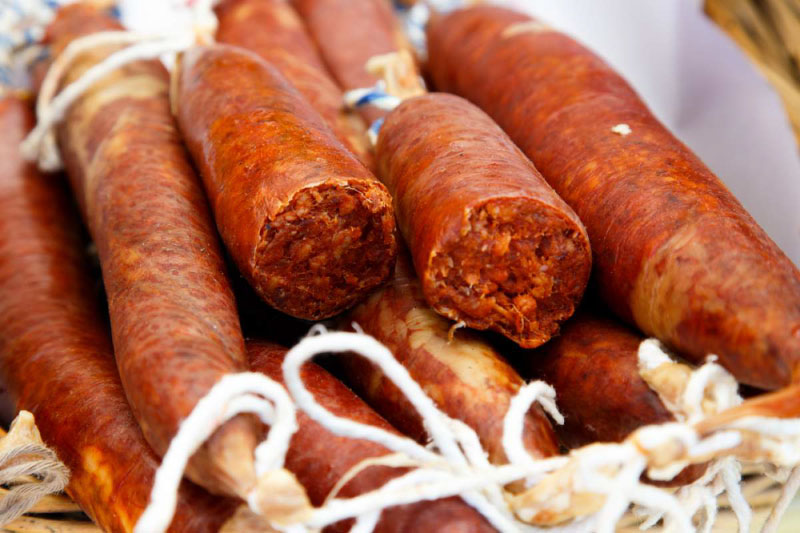
Support Local
Supporting local communities during your travels can have a profound impact. Stock up with groceries locally, stop in an artisan shop or enjoy a refreshment at a restaurant or bar. Now more than ever, these small businesses need support from travelers near and far.
Get to know Manacor
Manacor is a municipality in Mallorca comprising the town itself, the holiday destination of Porto Cristo, Sa Marina, Son Macià, s’Illot, Cala Morlanda, Cala Romantica, Cala Mendia, Cales de Mallorca and Cala Murada. Manacor is the second most important industrial center in Mallorca, mostly renown for the Majorica pearl factory and the furniture business, which are the most exported products of the area.
History of Manacor
The prehistory and Talayotic culture
The Roman and Byzantine period
The Islamic period
The Reconquista
The foundation of the town
Revolta Forana
The 16th to 18th century
Sa Llorençada and the agricultural upswing of the 19th century
The 20th century
Prehistory and Talayotic culture
The first signs of human occupation within the current municipality borders of Manacor dates from around 2,000 BC. From these early days, the sites of cova de s’Homonet Vell, Mitjà de ses Beies and sa Ferradura are the most interesting, as they were presumably used for funerary purposes. Other interesting sites to have a close look at, are those of s’Hospitalet Vell and Sa Marineta, both grouped constructions.
From around 1,200 BC, the Talayotic culture arrived in Mallorca and Menorca, presumably inspired by arrivals from the eastern or southern parts of the Mediterranean. It is likely that the people of the Talayotic culture consisted of a mix of Phoenicians, Etruscans, Greeks and indigenous people. The people from the east were exploring new opportunities in the Mediterranean district, looking for places to settle, markets for trading and to find materials such as metals which the western Europe was rich of. Around 575 BC, Phocean people (ancient Greek colony located in current day Foça, Turkey) had control of much of current day Catalonia and southern France, a territory they kept until the 3rd century BC when it was conquered by the Romans. One of the best examples of this, is seen in the ruins of Empúries, a city that was trading with the Balearic Islands.
The Talayotic culture altered the entire structure of the islands, giving life to the prehistoric fortified villages characterized by tower-like constructions of megaliths, as well as introducing new beliefs and lifestyles adopted from the ancient Greek world. The best example, also a point of interest in Manacor, is the prehistoric villages of s’Hospitalet Vell, des Boc and Bellver. As for singular talayotic constructions, it is worth highlighting those of Bendrís, Son Sureda and Sa Gruta.
The Roman and Byzantine empire
In 123 BC, Roman general, Quint Cecili “Baleàric” Metel, conquered Mallorca and incorporated it under the Roman empire by creating the cities of Palma and Pollen-tia, as well as several unnamed villages scattered on the island. The Romans captured the indigenous warriors to make them part of their army.
However, in the area of Porto Cristo, the many underwater findings suggests Roman activity from the Baix Impiri (Lower Empire), which was that of the Byzantine. In 533, Emperor Justinian I launched a series of military campaigns in an attempt to recover some of the lost parts of the Roman empire. The eastern parts of Mallorca and Menorca was then recaptured, which included the current areas of Manacor and Porto Cristo. As such, Mallorca and Menorca had not been lost in battle, but abandoned. In the 5th century, Vandals was on the island, but left again.
From this period, however, there are also two remarkable remains in Manacor; Basilica de Son Pereto and Basilica de sa Carrotja, two paleo-Christian, or early-Christian, constructions evidencing the presence of Christian communities. With the recapture of Mallorca by Justinian I, in 533, Christianity was suddenly introduced according to the laws of Theodosius I. In the following 200 years or so, there was an intense ecclesiastic activity here by the Christian community that was producing foundry and glass. The excavation site of Basilica de Son Pereto very well shows the baptism area and the funereal area. It is still uncertain whether this area was an independent community, or if it was part of a bigger settlement.
In the historical museum of Manacor, which should be visited, you can find exhibitions of Roman artifacts and mosaics found in the paleo-Christian basilicas, along with many other interesting finds from the local area.
The Islamic period (902 – 1229)
In 902, Mallorca, along with much of rest of the Hispanic world, came under Islamic dominance. Mallorca was annexed to the Emirate of Cordoba, after Issam al-Khawlaní had discovered the archipelago during a pilgrimage to Mecca, and conquered it the following years. The Arabs, mainly Berbers, lived in families or tribal communities in farms (alquerias) and huts (rahals/rafals), that is, those who lived outside Madina Mayurqua (Palma).
The Arabs divided the island in twelve different jurisdictions, or divisions, where Manacor was the biggest called “Juz d’ Manaqur”. A group of houses formed a small nucleus, as one of just a few outside the capital.
The amount of artifacts from the Islamic period in Manaqur is scarce, however, names of farmsteads, pottery etc. testifies the presence of the Muslims where the town is located.
The Reconquista
In September 1229, King Jaume I of Aragón landed in the bay of Santa Ponca with 150 ships and 27,000 soldiers with a clear goal; conquer Mallorca and annex it to the Crown of Aragón. On December 31, the capital was conquered and the wali defeated, the official day of the conquest. However, thousands of Muslims were still living on the island, and many of those who weren’t killed during the siege of the capital had fled to the mountains of Llevant and Tramuntana. In 1231/32, all Muslim resistance had been fought down and defeated by the Catalan Almogavars.
Soon after the conquest, the king divided the lands of Mallorca among those who had supported and participated in the campaign, including Templars, Bishops and counts. Most of the lands of Manaqur went to the count Nunó Sanç, who died just a few years later, hence the lands returned to the king.
In 1234 the parish of Manacor depended on that of Santa Maria de Bellver (Sant Llorenç des Cardassar), but it was constituted an independent parish in 1248.
The foundation of the new town
Documents stored in the municipal archive indicates the presence of a parish church dedicated to Santa Maria from 1236, which was the In the early 14th century, King Jaume II of Mallorca promulgated a set or ordinances which led to the creation of several towns on the island, including Manacor. The “Lleuda” as the law was called, granted every village of 100 houses or more a set of privileges such as rights to trade, lower and fixed taxes on imported merchandise and several other economical privileges. Moreover, the actual buildings were constructed following the contemporary “bastide” style of France, a fortified village with a rectangular urban plan, a market square in the center surrounded by houses with arcades. From this period, constructions such as the Torre de ses Puntes, Torre dels Enagistes and the Torre del Palau (former royal palace) are the best preserved in Manacor and very well gives us an idea of the medieval town.
The town extended from the urban nucleus on a hill unfolding towards the plain areas as the case of most towns. The first neighborhood was the ses Dames in the center, then the neighborhoods of es Baix de Cós and es Barracar arose to the east, followed by the Es Tren and Sa Torre to the west. To the south, the windmill district of Fartàritx was created. The northern part of the town was extended by the Plaça Sant Jaume, that prolonged the trading center.
Jaume II of Mallorca also granted the new town the Monday market and the right to hold an annual spring fair the last Sunday of May.
The revolt of the foreigners
Back during medieval times and up until the 16th or 17th century, Mallorca was mainly divided in two regions; Ciutat de Mallorca and Forana. Ciutat de Mallorca was the name of Palma, while Forana was a term used of the areas outside the city, and people from these areas was called the “Forans” roughly translated to “foreigners“. Manacor was part of the Forana.
From the late 14th century and well into the 15th century, tensions between the nobility and the peasants created a stratification that would end in a violent conflict. The Black Death of 1348 along with several droughts on the island had led to a state of famine and poverty for most of the peasants on the island, since products had to be imported at higher rates while at the same time fewer hands were available. This resulted in a higher fiscal pressure which was to balance the public debt.
In the meantime, corruption among the noble classes was a recurring issue that kept most peasants and day-laborers out of influence in the towns causing a series of disputes. The corruption also meant that it was more difficult for small farmers to make money on the market, as the landowners charged more money in rent of land.
In 1450, King Alfonso ordered a so-called “capbreu” to be created, a declaration of all real estate of the island. Landowners were obligated to document their ownership of their possessions and real estate, to prove their rights to administrate it. However, what sparkled the first real societal conflict on the island was that many of the small farmers seemed to have lost their documentation of their rights to own land. Moreover, it was people from the nobility that were in charge of writing this capbreu, which of course was interpreted by the peasants as another corruption scandal.
Soon after, an angry mob led by local peasant Simo “Tort” Ballester raged against the people who had written the capbreu, who were stoned and had to flee to the Ciutat de Mallorca (Palma). On July 26, 5,000 farmers from many villages gathered outside Inca to march towards the capital. The following day, they reached the city walls from where they cut of the water supply from the Font de la Vila (source of the town), which supplied the entire city with water, and besieged the city. The siege lasted until August when the bishop of Urgell intervened and the governor agreed to talk to the farmers. The farmers handed over a script of 31 chapters stating their demands, most of these about erasing the public debt and put an end to the corruption.
The demands of the farmers was not met by governor, which led to a violent approach from the farmers who started damaging towns all over the island and plunder merchants. In 1453, the king intervened by sending Italian mercenaries to the island to put an end to the revolt once and for all. After the defeat of the farmers, all of the cities and families that had had anything to do with the revolt was sentenced to pay severe fines to cover for the damages.
After a period of exile in France for 3 years, Simo “Tort” Ballester first returned to Menorca before coming to Mallorca where he was captured and imprisoned in the Bellver castle. He was executed in 1457, his dead body drawn and quartered.
The 16th to the 18th century
The 16th century begins with yet another conflict in Mallorca, the rise of les Germanies (the Brotherhood) in 1520. Essentially, it was a continuation of the Revolta Forana, only this time it was the artisan guilds of Mallorca demanding public debt erased. This conflict was much more organized than the prior and more violent as well, historians talk about this conflict as a regular civil war. However, the outcome was the same, King Carles V sent a delegation of his soldiers to fight the amateur army of les Germanies, which ended in a bloody battle in the marshes of Sa Pobla. In 1523, the last resistance of les Germanies was fought down and the leader imprisoned and executed in the Bellver castle. As a consequence, Manacor, along with other towns that had participated, was sentenced to pay severe fines causing even more debt.
During the 1500’s, the works of the original parish church of Santa Maria from the 13th century was also finished. In 1576, King Felipe II granted the Dominican friars permission to establish the second house in Mallorca. The construction of a primitive chapel dedicated to Sant Vicenç Ferrer began in 1597 and was finished in 1617, while the friars lived in small houses outside the urban center. The new Dominican convent expanded during the 17th century when the construction of the stunning cloister was begun. This was finished in 1744, and in 1919, it was declared a national monument.
The 16th century was particularly rough on towns close to the waterfront, as the empire of Ottoman started to campaign in the Mediterranean district. The Ottomans allied themselves with privateers from the North Africa enabling them to strike from several sides of the island. The constant threat of the Turks and pirates in the sea had economic and demographic consequences for the population in Manacor, and so in 1577 the watchtower of Falcons was set up in Porto Cristo to help guard the coast. The tower was operated by two guards, who, when they saw a hostile vessel in the sea, was to alert the town using smoke signals and flags. The most malicious raid on the coast of Manacor happened in 1611 when pirates landed at the peninsula of Punta de n’Amer, which currently belongs to the municipality of Sant Llorenç des Cardassar. Following this attack, the town council of Manacor agreed that the defense on the coastline had to be enhanced with a fortress, however, due to low socioeconomic state of the area the construction had to be postponed to 1693. The fortress was finished in 1696 and named Castell de sa Punta de n’Amer. It was operated by armed soldiers and canons on the platform.
Following the War of Spanish Succession, King Felipe V promulgated a decreed called “Nova Planta”, which more or less dissolved all town councils.
Sa Llorençada and the 19th century
The first third of the 19th century in Manacor was characterized by a historical sad event; sa Llorençada. Following the death of Ferdinand VII, supporters of Carlos de Borbón (Carlistes) and supporters of Isabel II (Liberals) clashed in a big conflict leading to the First Spanish Carlist War. In Mallorca, there were just a few clashes in some villages, however, it was in Manacor the biggest of them took place. Local historian, Josep Fuster, explains to a newspaper, that Manacor at that time was still an explicitly religious and confessional community with concerns to whether a woman could hold the reign of Spain.
It was the on the day after the celebrations of the feast of Santa Christina (Christina of Tyre), on June 24, that 24 liberal supporters woke up finding their houses marked with crosses made of human excrement. Four carlist leaders were imprisoned for the crime, despite no proof was exhibited. The carlists were furious, and in a series of secret meetings they came up with a plan to free their fellow colleagues, and, to raise awareness of the government being in the hands and in favor of the liberals. The carlists started a revolt, and with violence they occupied the jail, freed their members and replaced them with liberals they meet on their way. But this was not the only thing that happened. The carlists occupied the town hall, organized free dinners to gain more supporters and set up a guardian system t5o prevent anyone from exiting the town to alert others, Manacor was basically under siege. However, the word somehow got out and reached Palma. In the very early hours of the day after Sant Llorenç (Saint Lawrence), on August 11, 80 soldiers on horseback from Palma entered Manacor to stifle the revolt. One of the carlist leaders, Bartomeu Riera Tafal, was sentenced to death as a consequence.
In a non-contextual way, the carlist war had other consequences for parts of Manacor, namely the convent of Sant Vicenç Ferrer. in 1835, the prime minister of Spain, Juan Álvarez Mendizábal, executed a national confiscation all monastic properties that weren’t making full use of their properties, to raise money for the state. There were several incentives to why he did this. Firstly, the war against the carlists was expensive. Secondly, he wished to foster a more entrepreneurial society by auctioning the monastic properties to private investors allowing them to become land owners, or allow current landowner to increase their holdings. This would create more jobs, increase production, hence more tax income. Another aspect of the confiscation, was the signal value that Mendizábal could send to the carlist supporters, that times were changing and that the clergy sovereignty was dissolving.
Manacor also saw a great upswing in agricultural activities during the 19th century, livestock such as chickens, sheep and veal, carobs, olives, almonds, figs and grapes gave rise to a rich agricultural life. But also the exploitation of quarries and production of clay came to grow significantly during this century creating more jobs. One of the greatest evidences of this, is the imposing bell-tower of the parish church initiated in 1890 by Rector D. Rafel Ignasi Rubí Pocov that rises 79 meter in the air and is the highest in Mallorca.
Another evidence of the upswing of the 19th century, was the increase in population. In 1889, Manacor had 19,635 inhabitants compared to 6,620 inhabitants in 1799.
However, the century ended with a massive collapse of the economy. During the last half of the 19th century, the feared phylloxera louse had infected most grapevines in France, Spain and Italy causing destruction of nearly all grapevines. Mallorca had been fortunate enough to avoid the phylloxera so far at this time, which opened the Mallorcan wine production to the European market making the wine highly sought for in the other Mediterranean countries. In the last decade of the 1800’s, even Mallorca could not hold stand against the phylloxera causing a combustion of the entire wine industry. As a direct consequence of this, many landowners emigrated to Latin America to seek new fortunes and adventures and in 1900, the population was suddenly reduced to 12,408 inhabitants.
The identity shaping 20th century
During the Spanish Civil War, Manacor was a stronghold of the nationalists, and was one of the only places in Mallorca where republican troops managed to disembark during wartime. Captain Alberto Bayo managed to land on the coastline of Manacor with his 8,000 soldiers and take control of Porto Cristo. However, due to the well-established and organized frontier of the nationalist guards supported by the Italian airforce, they failed in moving farther inland and had to withdraw. Mallorca was a key target for the republicans, as Catalonia, Valencia and Menorca was already republican territory.
Just as the 19th century ended with a collapse, the 20th century opened to new industrial activities and opportunities in Manacor, which would later become the identity of the area. In 1900, a company from Barcelona took advantage of the unstable economy in Manacor and established a factory producing artificial pearls in the town. The company was operating based on a German patent giving it competitive advantages until the expiration of the patent in 1948, however, at that time it had already established itself as the leading producer of artificial pears. Already in 1930, the factory was occupying about 1,000 employees, a good sign that Majorica was on a trace of something profitable.
Another industry that really took off in the 20th century in Manacor, was the carpentry industry, which evolved and became the most sought for producer of furniture. In 1955, the carpentry industry occupied more than 1,000 employees spread in 300 carpentry workshops and in 1977, about 1,700 employees worked in 550 workshops. Furniture is the second largest industry of Manacor after artificial pearls.
With the tourism boom in the 1960’s, new markets evolved in Manacor and Porto Cristo, not to forget the production of souvenirs from olive tree. Wrought iron, glass and construction are other important industries of Manacor.
Today, Manacor is still renown for its artificial pearls and beautiful furniture, thus making it an important industrial institution in the Mallorcan economy.
Practical Info
Useful Numbers
Emergency: 112
National police: 091
Local police: 092
Guarda civil: 062
Fire: 080
Maritime emergencies: 900 202 202
Tourist Office: +34 971 82 95 95
Public Transport
Bus lines: 411, 412, 414d, 416, 417
Train lines: T3
Power Supply
220V


